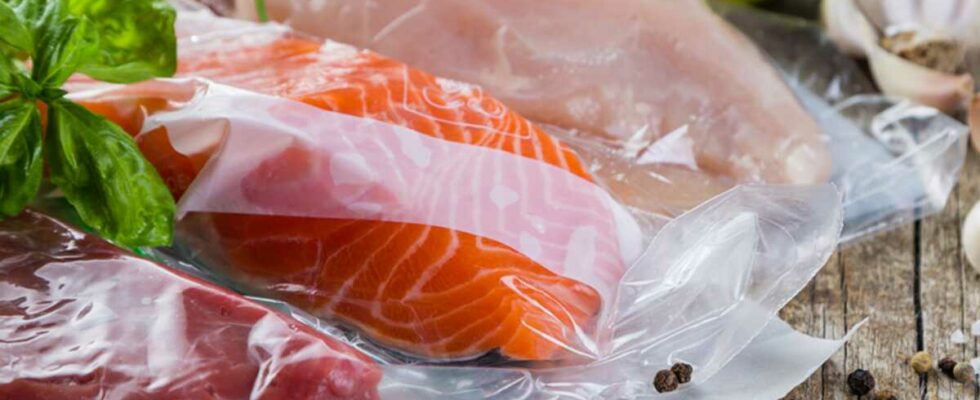If you are an amateur cook curious to discover new culinary techniques, you must have heard about sous vide cooking. Maybe this term means something to you without knowing exactly what it is. The mystery surrounding this concept is most likely linked to the fact that it is only very recently that the general public has had access to it. In the past, only renowned chefs used them in their restaurants. Very trendy today, this innovative cooking method has many advantages, but which ones? Is it necessarily better for health ? How it works ? What cooking time for each food ? To help you see more clearly, here is a quick overview of everything you need to know about sous-vide cooking.
Advantages and disadvantages: what is the point of sous-vide cooking?
The major advantage of sous-vide cooking is that it allows you to preserve vitamins and other nutrients in food. But how to explain it? This technique involves cooking foods packaged in bags from which the air has been removed in a humid environment at low temperatures. Pumping the air helps increase the flavors even more, because with this type of cooking, they are more concentrated. The bag also protects against evaporation of water and bacteria. The tastes are clearer, the nutritional substances intact, but it is also the way to perfectly control your cooking. Here, there is no risk of overcooking and the tenderness of the meat and fish is unrivaled. With so many benefits, it’s not for nothing that it is one of the healthiest cooking methods.
The only disadvantages that we identify with sous vide cooking is that it requires a significant investment if you want to buy an automatic machine and it takes up space on a work surface. The last little thing that we can criticize about this method is that it slightly distorts food.
Sous-vide cooker: how does it work?
Have you just invested in a sous vide cooker and have no idea how to operate it? Don’t panic, there’s nothing complicated. To better understand your device, it is useful to know its principle, here it is to remove air from a plastic bag. We therefore place our salmon steak in a specific bag normally supplied with the device, we seal it carefully then we remove the air contained inside using a pump. Heat a pan of water to the appropriate temperature for your fish and immerse it for a few minutes.
Concretely, if you love your pearly salmon steak to the heart, immerse it 25 minutes at 48°C in a pan of preheated water. On the other hand, if you prefer it well cooked, allow 30 minutes at 55°C.
Chicken, duck breast, salmon and other fish, beef: how to calculate the cooking time and what temperature for each food?
To practice sous vide cooking, you have to be patient! If you have a lunch break in a hurry, it is better to take out your good old frying pan to cook your steak, because that is the whole principle of this concept: a low temperature. And if you divide the cooking temperature by two or three, it necessarily takes longer to cook. Of course, this differs from product to product. Shellfish will not need to cook as long as roast beef. To avoid false notes, but also to make it easier for you to find your way around, here is a little summary of temperatures and cooking times for sous-vide foods :
- For a tender piece of beef, lamb, veal and game: allow 1 hour at 56°C.
- For tougher pieces: Roast or shoulder of lamb: 10 hours at 56°C Rack of beef: 24 hours at 56°C Flavette: 8 hours at 56°C
- For pork: Filet mignon: 1 hour 30 minutes at 56°C Pork ribs (depending on thickness): 4 to 8 hours at 74°C Ribs: 2 to 4 hours at 56°C Roast: 12 hours at 76°C
- For poultry: allow at least 1 hour (for a boneless chicken breast for example) at 63°C and a maximum of 8 hours (for brown meat such as duck breast) at 76°C.
- For fish such as tuna, salt or halibut: allow 20 minutes at 52°C. For salmon, trout or mackerel: allow 30 minutes at 52°C
- For shrimp: allow 30 minutes at 60°C
- For scallops: allow 40 minutes at 60°C
- For lobster: allow 45 minutes at 60°C
- For root vegetables: allow 1 hour 30 minutes at 84°C
- For vegetables such as carrots, parsnips, potatoes, turnips, celery or beets: allow 2 hours 30 minutes at 84°C
Immersion heater, cooker: how to cook sous-vide without a machine?
Contrary to what one might believe, it is entirely possible to vacuum-sealing food without a device. Your grandparents have probably been using this tip to vacuum-pack food for a long time and you’ll see, it’s really very easy! No need for a vacuum cooker, immersion heater or pump. To do this, you only need two things that you inevitably find at home: a zip-top freezer bag and a large bowl of very cold water.
Start by placing your food, raw or cooked, in the freezer bag. Close the bag, taking care to leave an opening of 2 cm. Then gradually immerse your bag in the large bowl of very cold water. Make sure the water is really very cold, do not hesitate to add ice cubes. As you immerse the bag in the cold water, the air is forced out by the water pressure and released through the opening you left. Once your airtight plastic bag is almost completely underwater, it’s time to reseal it. And there you have it, this way, you can vacuum pack your food very simply and with very few utensils.
